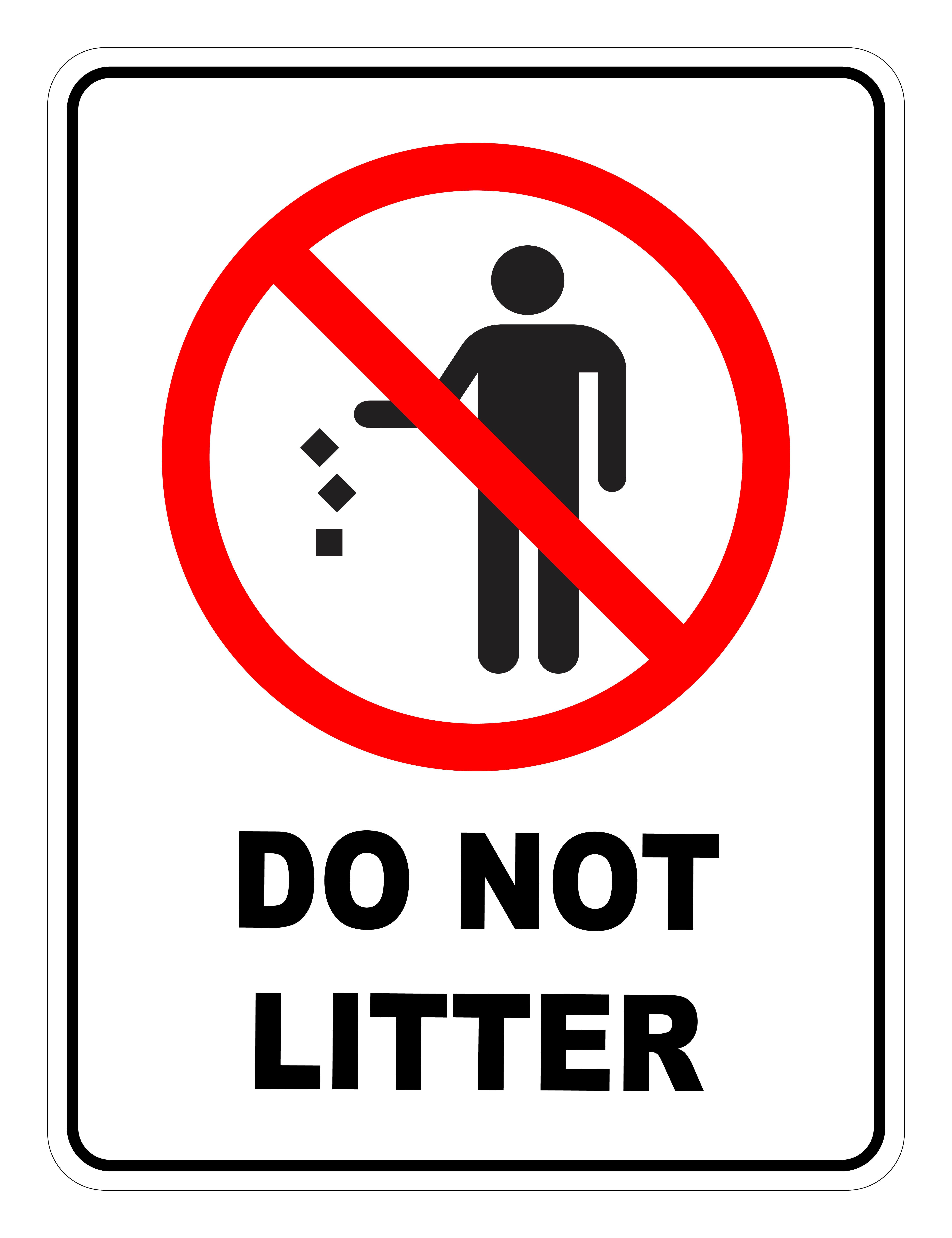Keeping our environment clean and safe is a responsibility we all share. It’s not just about aesthetics; it’s about protecting wildlife, preserving natural resources, and ensuring a healthy future for generations to come. One simple act can make a world of difference: properly disposing of waste and avoiding littering.
Do Not Litter Prohibited Safety Sign
 This sign, a clear and direct reminder, underscores the importance of avoiding littering in any location. Whether it’s a park, a construction site, or a public street, the message remains the same: Keep it clean! Litter, seemingly insignificant at first glance, contributes to a myriad of problems, from attracting pests and spreading diseases to polluting waterways and damaging ecosystems. Moreover, litter creates an unsightly environment that detracts from the beauty of our surroundings and can negatively impact property values.
This sign, a clear and direct reminder, underscores the importance of avoiding littering in any location. Whether it’s a park, a construction site, or a public street, the message remains the same: Keep it clean! Litter, seemingly insignificant at first glance, contributes to a myriad of problems, from attracting pests and spreading diseases to polluting waterways and damaging ecosystems. Moreover, litter creates an unsightly environment that detracts from the beauty of our surroundings and can negatively impact property values.
Think about the cumulative effect of seemingly small actions. A single discarded wrapper might not seem like a big deal, but multiply that by hundreds or thousands of people doing the same thing every day, and the problem quickly escalates. Litter accumulates, turning pristine environments into unsightly messes. The wind and rain carry it into our rivers, lakes, and oceans, where it can harm aquatic life. Animals mistake plastic for food, leading to internal injuries and starvation. Microplastics, tiny fragments of plastic that result from the breakdown of larger items, are now pervasive in our environment, entering the food chain and posing a potential threat to human health.
Beyond the environmental impact, littering also has economic consequences. Cleaning up litter requires significant resources, diverting funds that could be used for other vital public services. Businesses can suffer as well, as litter can deter customers and create a negative perception of their establishment. The costs associated with litter removal and prevention are ultimately borne by taxpayers and consumers.
So, what can we do to address this problem? The answer is simple: be mindful of our waste and dispose of it properly. Carry a reusable bag for collecting trash if there are no readily available bins. Teach children the importance of keeping their surroundings clean. Support local initiatives aimed at litter prevention and cleanup. Even small actions, such as picking up a piece of litter on the street, can make a positive impact. Remember, creating a cleaner and healthier environment starts with each and every one of us. Let’s all commit to doing our part to keep our communities clean and beautiful.
By adhering to these simple practices, we can collectively minimize the presence of litter and its detrimental effects. A cleaner environment not only enhances our quality of life but also contributes to the preservation of our planet for future generations. Let’s strive for a future where litter is a thing of the past, where our surroundings are clean, healthy, and beautiful for all to enjoy. The responsibility rests with each of us to ensure a more sustainable and aesthetically pleasing world.
If you are searching about Do Not Litter Prohibited Safety Sign you’ve visit to the right place. We have 1 Pictures about Do Not Litter Prohibited Safety Sign like Do Not Litter Prohibited Safety Sign and also Do Not Litter Prohibited Safety Sign. Here you go:
Do Not Litter Prohibited Safety Sign
 www.safetycivil.com.auDo Not Litter Prohibited Safety Sign
www.safetycivil.com.auDo Not Litter Prohibited Safety Sign
do not litter prohibited safety sign. Do not litter prohibited safety sign